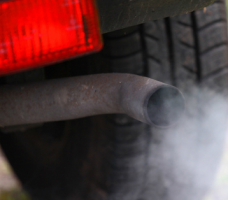
— Winter months mean driving with the windows up and the heater cranked to 10. Accidents are common on ice and snow, but another kind of accident is one that can usually be completely prevented.
Every winter, carbon monoxide poisoning kills auto occupants without any warning. Carbon monoxide can't be seen, heard, or smelled, but can easily enter a car and cause a host of health problems.
At low levels, signs of carbon monoxide poisoning include headaches, nausea, fatigue, dizziness, and trouble breathing.
At higher levels, carbon monoxide poisoning can cause vomiting, confusion and coordination problems, then loss of consciousness and death.
A study from the National Highway Traffic Safety Administration said that while 84 percent of vehicle carbon monoxide deaths involve suicide in stationary vehicles, every death in a moving vehicle is accidental and unintentional.
In January, 2014, stories across the U.S. tell the effects of carbon monoxide poisoning from vehicles.
- Seven Arizona occupants in the camper shell of a truck suffered carbon monoxide poisoning after the tail pipe of the truck went under water while four-wheeling. Ages six to 17, all were found unresponsive but are expected to fully recover.
- A 46-year-old Connecticut man was found dead in his car after letting the car run while he slept. Authorities believe snow had blocked the exhaust pipe.
- Two Nevada teens were found dead in their vehicle while parked in front of a residence. Authorities believe the Toyota 4Runner had a damaged exhaust near the rear tire that allowed carbon monoxide into the vehicle while idling.
- Seven Washington residents suffered carbon monoxide poisoning while traveling in their van. Fire officials said the tail pipe of the vehicle was rusted off near the frame of the van. Carbon monoxide from the exhaust entered the van through the rear wheel well.
Those examples are just a few from one month, not counting numerous others that didn't make the news.
All vehicles manufactured since the 1980's include complex catalytic converters that convert carbon monoxide to carbon dioxide, which is harmless. These vehicles also are equipped with sophisticated computers and oxygen sensors that further reduce carbon monoxide emissions.
However, even the most efficient gas engines still create carbon monoxide and all it takes is one little leak to cause sickness or death.
Tips to Prevent Carbon Monoxide Poisoning in Cars
- Don't ignore even the smallest hole in a muffler or exhaust pipe. Repair any damage or rusted areas, especially before winter.
- A garage or small space is not your friend. Don't warm-up your car with the garage door down and if possible, open the door completely and make sure the exhaust is outside the garage.
- If your car is keyless and you park in an attached garage, do not forget to turn off the car. Each year, people are found dead from carbon monoxide poisoning in their home and the cause was a car left running in the garage.
- Make sure to remove any snow that could block the tail pipe.
- If sitting in an idling car, always keep the window partially opened.
- Install a carbon monoxide detector in the vehicle. Carbon monoxide is measured in parts per million (ppm). Levels sustained at 70 ppm can cause headache, fatigue and nausea. At concentrations of 150 to 200 ppm, expect disorientation, unconsciousness, or death.
If you think you are suffering from carbon monoxide poisoning in your car, get to fresh air and have a mechanic give your car a thorough inspection.




